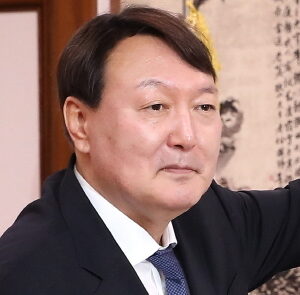Deterrence is the new word for defense. Now the Americans and South Koreans are talking about vastly increasing their deterrence against North Korea, which says it is building more and better missiles and more nuclear warheads, too, all for “defense.” When our leaders talk about increasing “deterrence,” they, too, mean doing a lot more to defend against enemies.
President Biden, at his summit with South Korea’s President Yoon Suk-yeol, engaged in rhetorical pyrotechnics, declaring “a nuclear attack by North Korea against the United States or its allies” would “result in the end of whatever regime were to take such an action.”
Big talk, but American military people have been saying the same thing for years. Kim Jong-un may order the North’s seventh nuclear test, but he’s not about to fall into the pit of ordering a direct attack, nuclear or not, knowing the holy hell that would befall him.
The term now in vogue is “extended deterrence,” but what does “extend” add to the equation, the balance of forces? Will American and South Korean troops stage more and better military exercises? Will we send big bombers from Guam and Okinawa to prowl below the Demilitarized Zone, within eyesight of North Korean gunners waiting to ambush them from the other side?
Nor does the news, imparted by Biden, that a single nuclear-powered American submarine is visiting a Korean port alter the balance. The fact that it’s nuclear is not a game-changer. So are the aircraft carriers that move in and out of Korean ports. Will the carriers be cruising off the east and west coasts of South Korea more often? Maybe. Will the aircraft they carry do more than play war games, showing their versatility and sophistication? Sure, but Kim will not try to shoot one of them down any more than Biden will order them to fire on the North Koreans.
The Americans use the word “deterrence” to put off South Korean desires for more than just rhetoric. Most South Koreans think South Korea should be producing its own nuclear warheads, and many want the Americans to store nuclear warheads in the South as they were doing until 1991 when George H.W. Bush, then president, withdrew them. The joint Washington Declaration signed by Biden and Yoon put the kibosh on any notion of reversing that decision.
Bush ordered the nuclear warheads withdrawn because of the vain hope that North Korea might give up its program for building its warheads. The North Koreans were far from conducting their first nuclear test, but then, as now, the Americans thought they could make a deal. Americans have a long record of wishful thinking on the topic.
Now Biden and Yoon have agreed on setting up a “consultative” committee of South Koreans and Americans to ensure they’re all on the same page. But haven’t they always been doing that? The committee will provide another channel to exchange views but it won’t change much. It all depends on the closeness of contacts, the degree of mutual trust and politics back home.
There was probably a lot more chance in 1991 that North Korea would denuclearize than today. Roh Tae-woo, the general elected South Korea’s president in 1987, was riding high years before he was jailed for massive corruption and his role in repressing the bloody Gwangju Revolt of May 1980. North Korea at that time was far from fabricating its first nuclear warhead, much less testing one, which did not happen until 15 years later when Kim Jong-il, father of Kim Jong-un, ordered the North’s first nuclear test.
Now Kim Jong-il’s son, Kim Jong-un is hinting he might fire one of his latest models for real, making “extended deterrence” all the more necessary. So what are the implications? The answer is not pleasant to contemplate. Might South Korea discourage activists from opposing the Korean-American alliance?
It’s also possible to criticize “extended deterrence” from quite another perspective. Some people will say it’s a weak substitute for arming South Korea with nuclear warheads, whether made in the South or in the United States. South Korea’s military strength is rising spectacularly.
Given the firepower of South Korea, there’s no need for the South to go nuclear, considering all the nukes the U.S. has stockpiled in Japan, Guam and Hawaii, and also on aircraft carriers. The South does not have to go nuke for nuke against the North to give new meaning to the phrase “extended deterrence.”

